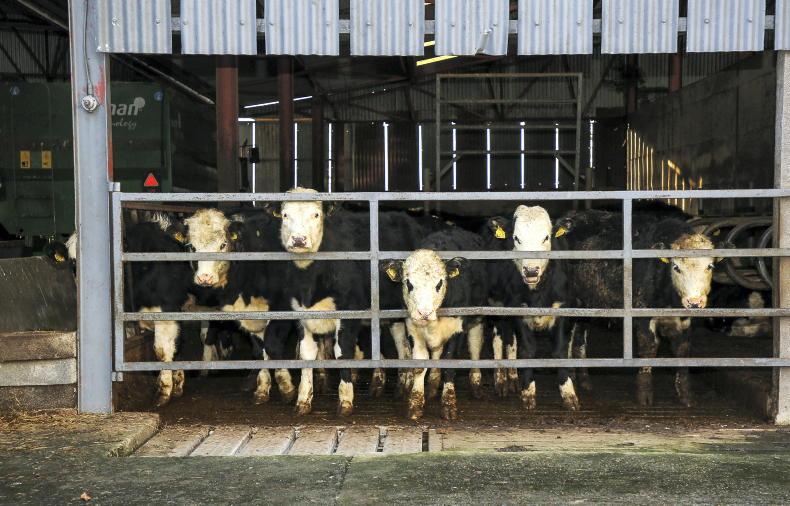In order to have cattle fit for slaughter at the end of the second grazing season there are two things necessary. Firstly, a calf that is born earlier than St Patrick’s Day.
After this, stock will struggle to be up to a sufficient liveweight at the end of the second grazing season to be fit for slaughter.
Secondly, for those that are going to make the grade, they need to be performing every single day they are on the farm.
While performance at grass on many farms is good, over the first winter is where a lot of stock will fall behind target and fail to reach a suitable slaughter age at the end of the second grazing season.
On the demo farm, a daily liveweight gain of 0.8kg/day is targeted over the first winter. This can only be achieved through high-quality silage alongside a low level of concentrate. Stock need to be on 72% DMD (dry matter digestibility) at a minimum.
Last winter on the demo farm, 72% DMD silage plus 1.5kg concentrate was fed over a 90-day feeding period.
The better the quality of silage, the less concentrate that will be required.
Where high-quality grass silage is not available, the level of concentrate needed to support this level of weight gain is not going to be economically viable.
Meal feeding is stopped about three weeks prior to turnout to prepare stock for a 100% forage-based diet once they go to grass.
A target turnout date of 15 March has been set in the blueprint. For drier and earlier farms, this date may be earlier while on heavier farms it will likely be later.
Target weight for bullocks at turnout is 362kg while for heifers it is 342kg. As this is their birth date, it represents an average daily gain of 0.8kg/day to 0.85kg/day for the first year of life.
In order to have cattle fit for slaughter at the end of the second grazing season there are two things necessary. Firstly, a calf that is born earlier than St Patrick’s Day.
After this, stock will struggle to be up to a sufficient liveweight at the end of the second grazing season to be fit for slaughter.
Secondly, for those that are going to make the grade, they need to be performing every single day they are on the farm.
While performance at grass on many farms is good, over the first winter is where a lot of stock will fall behind target and fail to reach a suitable slaughter age at the end of the second grazing season.
On the demo farm, a daily liveweight gain of 0.8kg/day is targeted over the first winter. This can only be achieved through high-quality silage alongside a low level of concentrate. Stock need to be on 72% DMD (dry matter digestibility) at a minimum.
Last winter on the demo farm, 72% DMD silage plus 1.5kg concentrate was fed over a 90-day feeding period.
The better the quality of silage, the less concentrate that will be required.
Where high-quality grass silage is not available, the level of concentrate needed to support this level of weight gain is not going to be economically viable.
Meal feeding is stopped about three weeks prior to turnout to prepare stock for a 100% forage-based diet once they go to grass.
A target turnout date of 15 March has been set in the blueprint. For drier and earlier farms, this date may be earlier while on heavier farms it will likely be later.
Target weight for bullocks at turnout is 362kg while for heifers it is 342kg. As this is their birth date, it represents an average daily gain of 0.8kg/day to 0.85kg/day for the first year of life.






 This is a subscriber-only article
This is a subscriber-only article










SHARING OPTIONS: